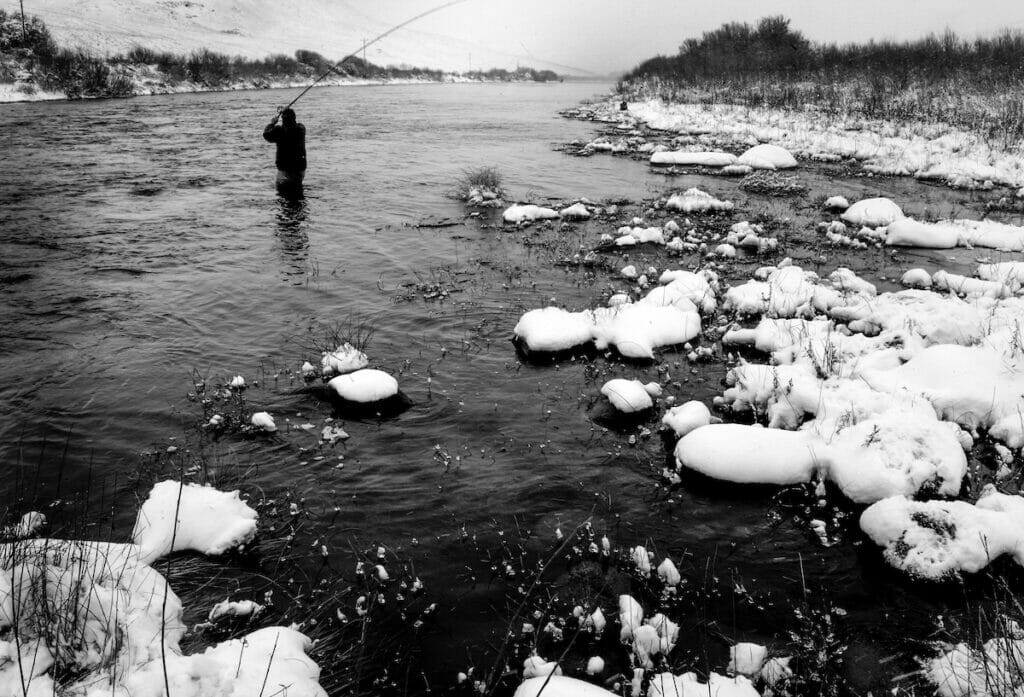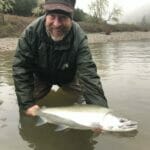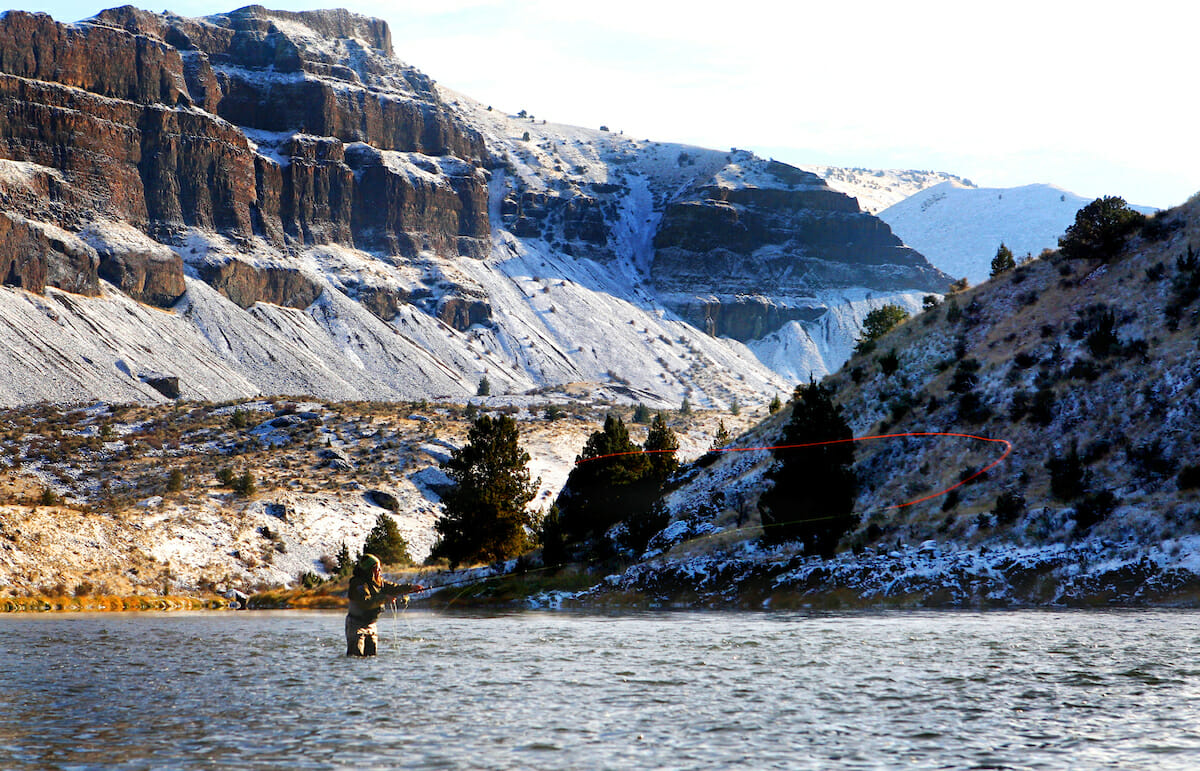The rest of us, not so much. Winter continues in the West, but that’s ok with us anglers.
There’s a common schtick these days in the grocery store, the post office, the coffee shop. “Can you believe this winter? When is spring going to get here? Man, I’m over this.”
It’s past mid-April now and I’m wondering if we’ve all gotten soft living in the drought-ridden West in the decades since the last real winters of the mid-1980s. In a past life, I had the good sense to take a year off college in the winter of 1983 to be a ski bum in the Rockies. That was the year that the dam almost blew out at Glen Canyon, an event prayed for by the Edward Abbeys and Katie Lees of the world who remembered the surreal beauty of the canyon itself before what they called “Lake Foul.” That was also the last good year of really stunning snowfall in the West.
Until this one. To be clear, I’ve been one of the whiners. Here in Montana, well past tax time, there’s snow in the air and snow on the ground. More than two feet of snow fell on Bozeman in early April in one dump, enough to make new arrivals pine for past winters in sunnier climes and life-long locals think about purchasing a condo in a place named Sun City.
So I try to temper the lugubrious lament with this caution: trout love water, snow is water in another form and so is ice and there’s plenty of both still. Anyone who keeps tabs on the weather knows all about atmospheric rivers and has watched the pummeling that our West Coast has endured. But the river has kept the interior West well-watered too. A major basin in Nevada, for example, stands at 321 percent of normal. Arizona’s Verde stands at 915 percent of normal. New Mexico’s Gila, 229 percent and lower Rio Grande, 276 percent. Most of Colorado’s basins are well over 100 percent and some close to 200 percent. California? The southern Sierra and its golden trout have 318 percent of normal snowpack in mid-April.

It has also been a cold spring. The grass has been a long time growing. That may not be good for big game animals, but it is good for trout. A nice, slow melt will keep the snow in the high country, coming out a bit at a time rather than in one big push that destroys lives and livelihoods. The snow is falling as I write this on April 19, so I try to think about those tiny little streams coming off the Pine Forest mountains in Nevada where remanent native trout from the great lake of the Pleistocene, Lahontan, still swim. I fell on the ice this morning walking out to my car and thought of the Bonneville cutthroat high in the Salt River Range in Wyoming as I lay there doing a head-to-toe assessment. A tractor trailer rig skidded out on the highway the other day during an ice storm and I made myself think about Rio Grande cutthroat high in the mountains outside South Fork, Colorado, still under two or three feet of snow. They all need water to live. So do rainbows and browns and brookies and salmon and steelhead and Gila and Apache and San Juan and Greenbacks and Westslopes and whitefish and grayling.
So instead of whining, I’m going to think about coldwater fisheries. Because I don’t think my liver can hold up to the alternative.



